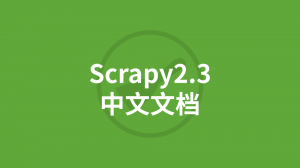阅读(3925)
赞(0)
scrapy 2.3 在条件中使用文本节点
2021-06-03 14:26:14 更新
当需要将文本内容用作 XPath string function 避免使用 .//text() and use just . 相反。
这是因为表达式 .//text() 生成一个文本元素集合--a node-set . 当一个节点集被转换成一个字符串时,当它作为参数传递给一个字符串函数(如 contains() 或 starts-with() ,它只为第一个元素生成文本。
例子:
>>> from scrapy import Selector
>>> sel = Selector(text='<a href="#">Click here to go to the <strong>Next Page</strong></a>')
转换A node-set 字符串:
>>> sel.xpath('//a//text()').getall() # take a peek at the node-set
['Click here to go to the ', 'Next Page']
>>> sel.xpath("string(//a[1]//text())").getall() # convert it to string
['Click here to go to the ']
A node 但是,转换为字符串后,会将其自身的文本加上其所有后代的文本组合在一起:
>>> sel.xpath("//a[1]").getall() # select the first node
['<a href="#">Click here to go to the <strong>Next Page</strong></a>']
>>> sel.xpath("string(//a[1])").getall() # convert it to string
['Click here to go to the Next Page']
所以,使用 .//text() 在这种情况下,节点集不会选择任何内容:
>>> sel.xpath("//a[contains(.//text(), 'Next Page')]").getall()
[]
但是使用 . 指的是节点:
>>> sel.xpath("//a[contains(., 'Next Page')]").getall()
['<a href="#">Click here to go to the <strong>Next Page</strong></a>']
